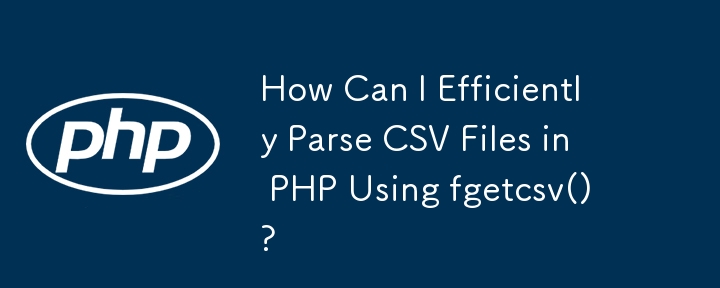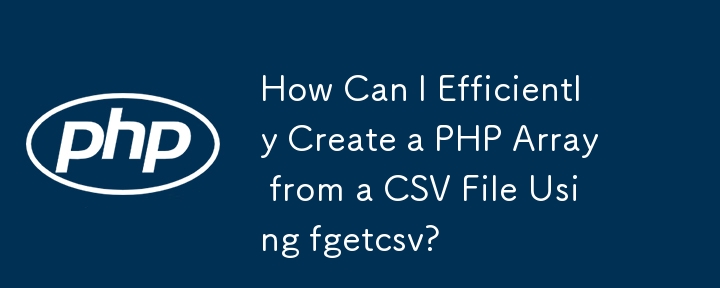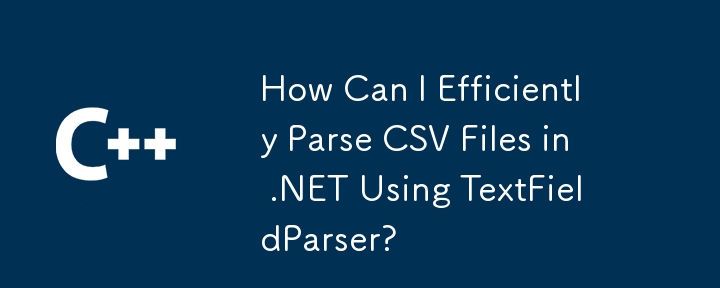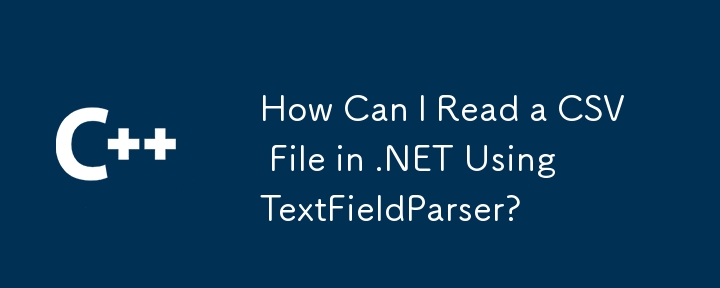Found a total of 10000 related content

How to Download a CSV file from a PHP Array?
Article Introduction:How to Create and Download a CSV File from a PHP ScriptCreating and downloading a CSV file from a PHP array is a useful technique in website...
2024-11-08
comment 0
593

How to Force-Download a CSV File Through AJAX in PHP?
Article Introduction:This article explores the challenges of force-downloading a CSV file using AJAX in PHP. It highlights that AJAX cannot directly initiate file downloads, and suggests alternative methods to achieve the desired functionality. The solutions include crea
2024-10-24
comment 0
410

PHP/Laravel CSV file post-processing: Remove excess tail commas from exported files
Article Introduction:This article aims to solve the problem of excessive tail commas at the header or end of the table when exporting CSV files using PHP or Laravel. We will explore a concise and efficient PHP solution, using the file() function to read the file contents, and accurately remove the specified characters at the end of each line (including commas and newlines) through the rtrim() function, and finally use file_put_contents() to rewrite the cleaned data to the file, thereby generating the expected CSV output.
2025-08-14
comment 0
449


PHP/Laravel CSV file post-processing: efficiently remove excess commas at the end of the line
Article Introduction:When exporting CSV files using tools such as Laravel-Excel, due to the inconsistent number of columns in different rows, unnecessary commas often appear in the head and tail rows. This article provides a concise and efficient PHP solution. By reading the file content, using the rtrim function to remove the extra commas and line breaks at the end of each line, and then rewrite the processed content to the file, thereby realizing the automated post-processing of CSV files and ensuring the clean and standardized output format.
2025-08-12
comment 0
446

PHP trim function handles traps and solutions for end-of-line characters in CSV file
Article Introduction:When using the PHP trim function to clean the commas at the end of the CSV file, it may be invalidated due to the existence of cross-platform line breaks (such as \r, \n). These invisible newlines prevent the trim function from touching and removing the target comma. The core solution is to extend the character mask of the trim function, specifying commas with common newlines, ensuring that redundant characters at the end of the line are completely cleared, thus correctly processing CSV data.
2025-08-27
comment 0
431

How to Efficiently Process Large CSV Files in Go?
Article Introduction:Efficient Read and Write of CSV Data in GoThe Go code provided reads a large CSV file with 10,000 records, performs calculations, and then writes...
2024-11-03
comment 0
784

Quick Tip: How To Read a Local File with PHP
Article Introduction:PHP provides three native functions for local file operations: file(), file_get_contents() and fopen(). Although complete libraries are built around these functions, they are still the preferred method of quickly manipulating PHP files.
We will first understand the functions of these functions and then look at their working examples.
file() and file_get_contents()
File() and file_get_contents() work very similarly. They all read the entire file. However, file() reads the file into the array, while file_get_contents() reads the file
2025-02-08
comment 0
784


How to operate CSV files in PHP?
Article Introduction:Operating CSV files in PHP is mainly implemented through fgetcsv and fputcsv functions. 1) Read CSV file. Use the fgetcsv function to read and process data line by line. 2) Write to CSV file. Use the fputcsv function to write array data to the file. Note that line-by-line reading is used when file encoding and large file processing to optimize performance.
2025-05-20
comment 0
525


















